- Home
- Facilities
- Research
-
Working at CFN
- Arrival & Departure
- Reports & Publications
- Acknowledging Use of CFN Facilities
- Data Management
- The Guide to Brookhaven
Safety Procedures
- Operations Plan
- Experimental Safety Reviews (ESR)
- COSA Training
- Hours of Operation
- Laser System Qualification
- Transport of Hazardous Materials
- Vendor On-site Scheduling Procedure (PDF)
- News & Events
- People
- Jobs
- Contact
- Business
- Intranet
CFN 2023 Calendar
The Center for Functional Nanomaterials 2023 calendar features staff and user creations submitted in the 13th Annual CFN Image Contest. The contest gives us a chance to express our artistic sensibilities in two categories: Scientific and Technical (micrographs and images relating to CFN research) and Life at the CFN (images of the facility, instrumentation, offices, etc).
January

This image is not real!
It was generated by artificial intelligence (AI) tasked with dreaming about nanomaterials. This image was not generated using CFN equipment. It was generated entirely by computer. (2nd Place Winner)
Kevin Yager, CFN Staff, Brookhaven National Lab
February

Gold nanoparticles can be deposited on SiO2 surface with the protection of helium nanodroplets that evaporate after landing. An electric fi eld formed at the gold/SiO2 interface due a charge-transfer can facilitate catalytic reactions. CFN instruments used: Atomic Layer Deposition Tool, Dual Beam Scanning Electron/Focused Ion Beam microscope and Rapid thermal processing system were involved.
Haotian Yang, CFN User, Stony Brook University
Selected Journal Cover by The Journal of Physical Chemistry C: H. Yang, J. Cen, Q. Wu, C.J. Ridge, X. Tong, C. Zhou, V. Veerasamy, D. Su, C.M. Lindsay, M. Liu*, A. Orlov*. J. Phys. Chem. C, 126, 10 (2022).
March
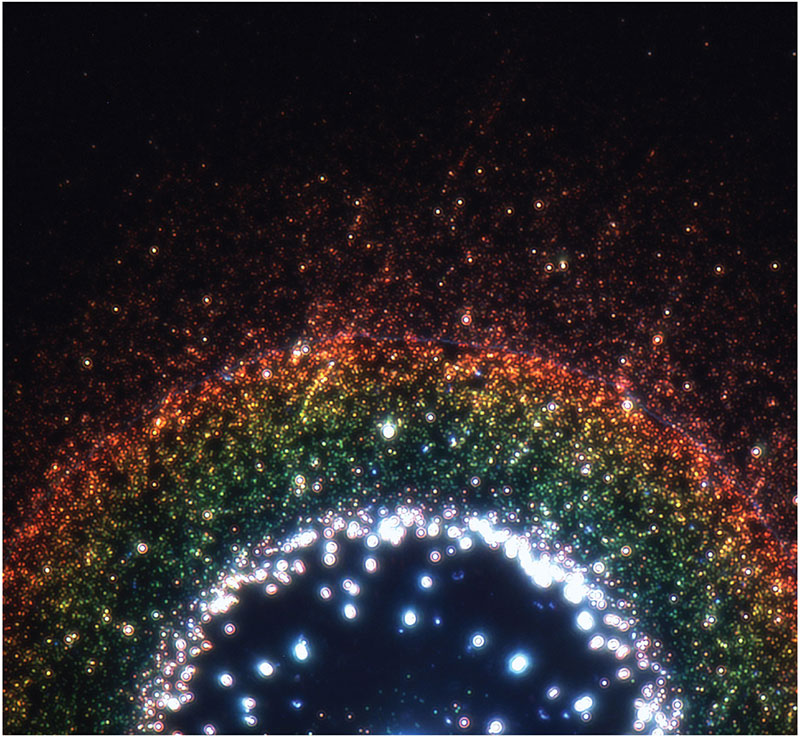
Nano Rainbow
A moment of gold nanoparticle (50 nm) agglomeration in its drying aqueous suspension around an air bubble. CFN instrument used: Nikon Eclipse Ti2 Hyperspectral Dark Field Microscope. (1st Place Winner)
Feiyue Teng, CFN Postdoctoral Researcher, Brookhaven National Lab
April

The study addressed the challenge of stability of nanoparticles (NPs) in physiological media or organic solvents. Designed organic molecules (peptoids) can act as molecular stabilizers for NPs in varied solution environments and at liquid interfaces, while providing a small shell thickness. The particle “toughness” is represented by its ability to resist a shark. CFN capabilities used: CFN Materials Synthesis and Characterization Facility, lab SAXS, TEM, and partner SAXS beamlines at NSLS-II.
Oleg Gang, CFN Staff, Brookhaven National Lab
Selected Journal Cover by the Journal of the American Chemical Society: S.T. Wang, H. Zhang, S. Xuan, D. Nykypanchuk, Y. Zhang, G. Freychet, B.M. Ocko, R.N. Zuckermann, N. Todorova, O. Gang*. J. Am. Chem. Soc., 144, 18 (2022).
May
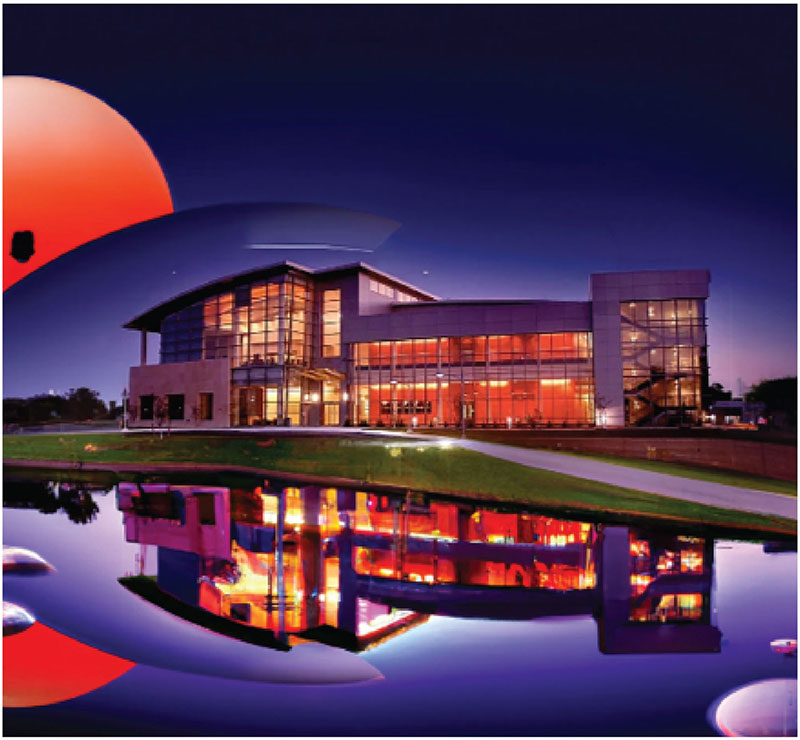
Photo of the CFN modifi ed using DALL·E 2, an artifi cial intelligence system for generating and editing images Reference
Anibal Boscoboinik, CFN Staff, Brookhaven National Lab
June
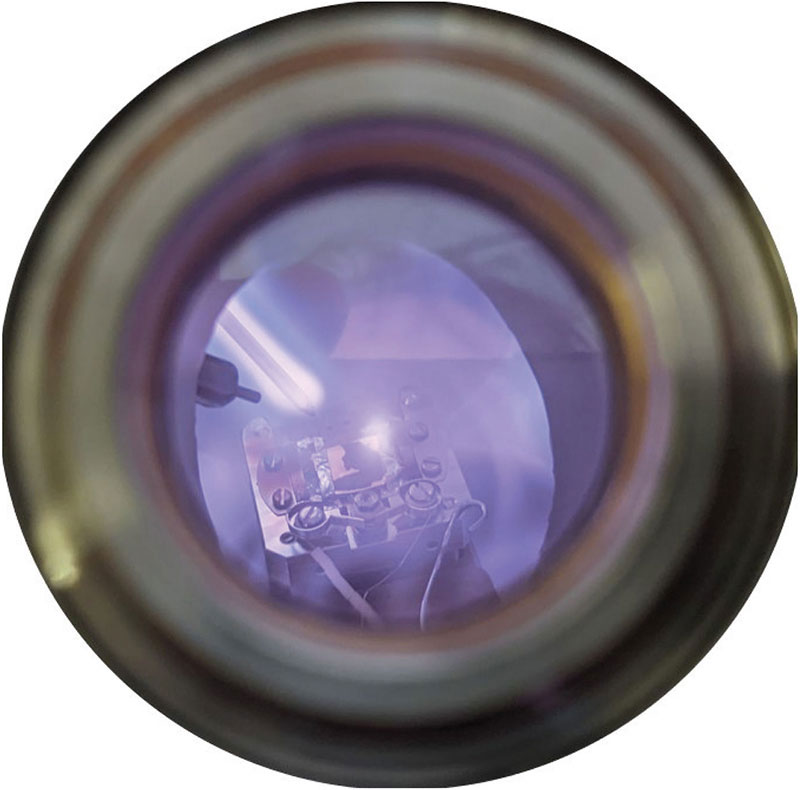
View From a Chamber Viewport
Trapping Xenon in nanocages impregnated on Ru powder. The purple color comes from Xe plasma used as part of the experiment. CFN capabilities used: CFN Proximal Probes Facility
Anibal Boscoboinik, CFN Staff, Brookhaven National Lab
July
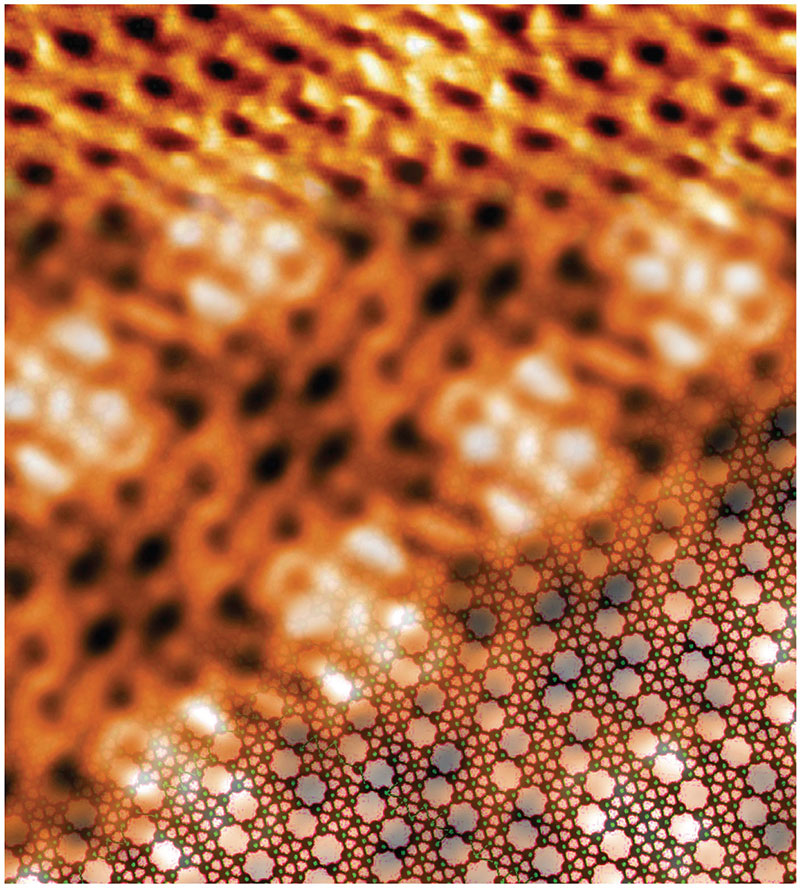
Borophene in Top Form
Two-dimensional layers of boron atoms have been grown on a variety of surfaces, typically noble metals. Borophene sheets can form different polymorphs with different properties, which is attractive for applications, but for practical use larger fl akes with weake metal–substrate interactions are required. Now, Rongting Wu, Sohrab Ismail-Beigi, Ivan Božovic, and co-workers have synthesized micrometer-scale single-crystalline borophene on a square-lattice Cu (100) surface.
Rongting Wu, CFN User, Yale University
Selected Journal Cover by Nature Chemistry: R. Wu, S. Eltinge, I.K. Drozdov, A. Gozar, P. Zahl, J.T. Sadowski, S. Ismail-Beigi*, I. Božovic*. Nat. Chem., 14, 4 (2022).
August
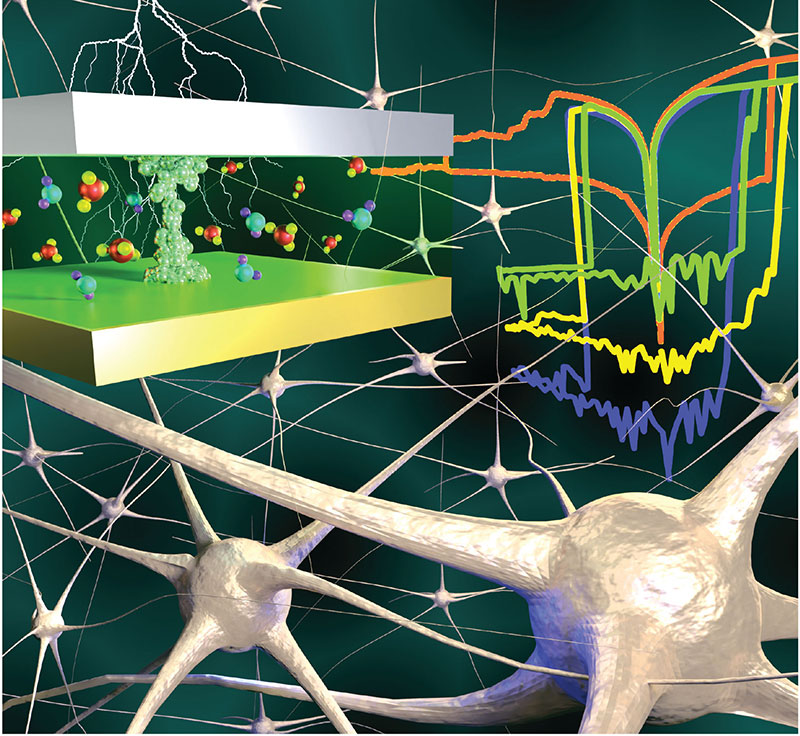
Hybrid Neuromorphic Resistive Memory
This work demonstrates control of device switching parameters and reduced stochastic switching, which are criticaltechnology issues for resistive random-access memory (RRAM). These devices show promise as multi-level memories, which are essential elements in neuromorphic computing. The hybrid material was created by vapor-phase infiltration of alumina into silver-doped SU-8 — a conventional photoresist. The CFN Electron Microscopy, Nanofabrication, and Materials Synthesis & Characterization Facilities were used in this study.
Ashwanth Subramanian, CFN User, Stony Brook University
Selected Journal Back Cover by Advanced Electronic Materials: A. Subramanian, N. Tiwale, K. Kisslinger, C,Y. Nam*. Adv. Electron. Mater., 8, 7 (2022).
September
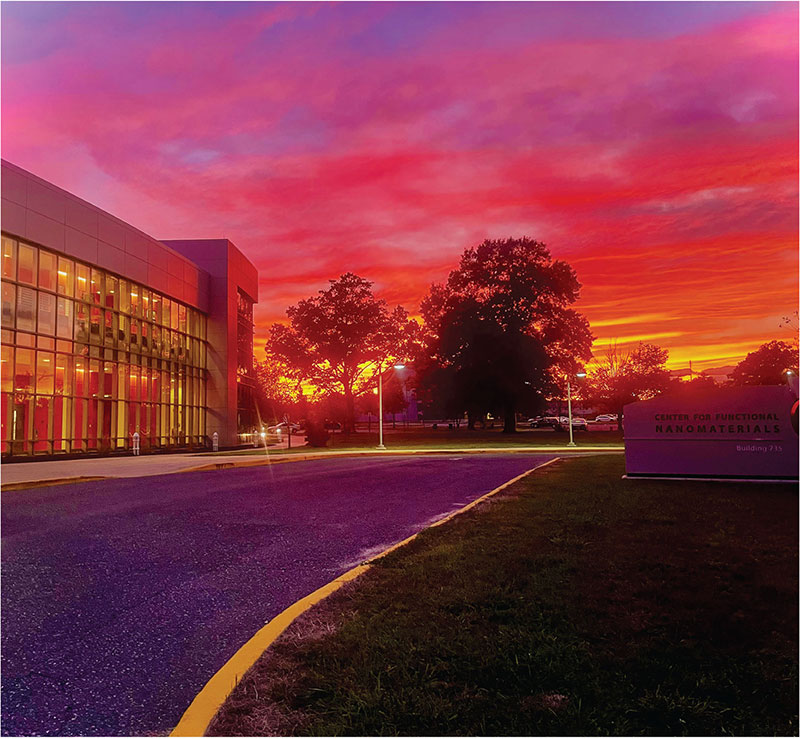
The Sky Speaks in a Thousand Colors
Outside the CFN building. (1st Place Winner)
Sayantani Sikder, CFN User, Stony Brook University
October
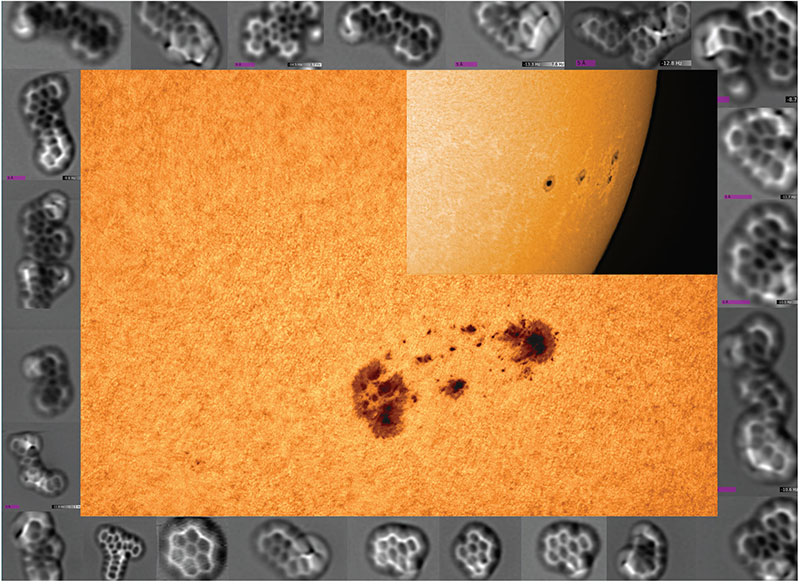
Scale Contrasts
From the Quantum world at molecular scale and resolution to our star in our solar system at it’s current solar activity maximum (custom rebuild LT-STM/AFM vs. home build telescope’s view from my drive way).
Percy Zahl, CFN Staff, Brookhaven National Lab
November
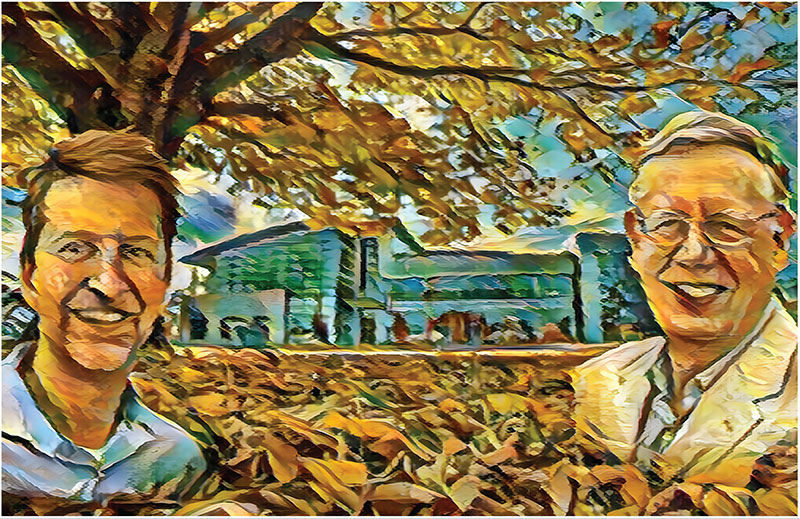
Painting of CFN Directors
Image generated by an AI mimicking the style of Vincent van Gogh. (2nd Place Winner)
Kevin Yager, CFN Staff, Brookhaven National Lab
December
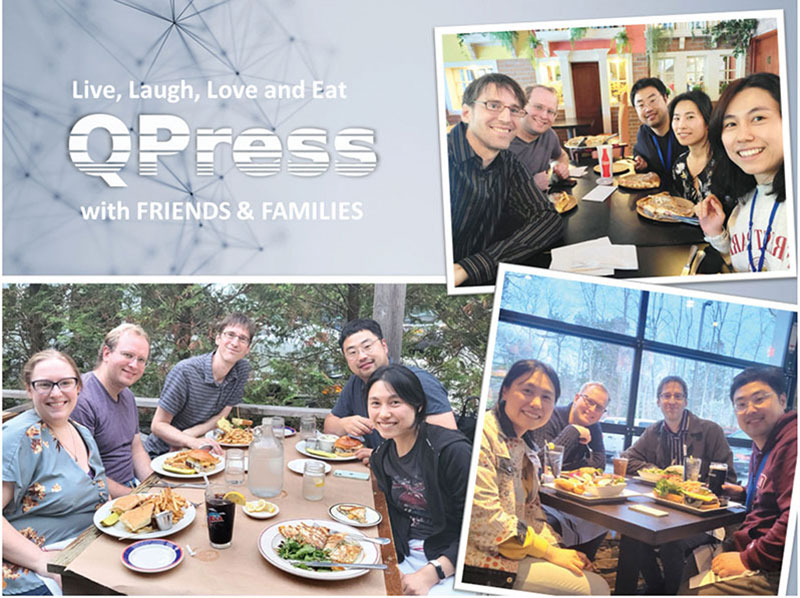
Live, Laugh, Love and Eat: QPress with Friends And Families
Suji Park, CFN Staff, Brookhaven National Lab
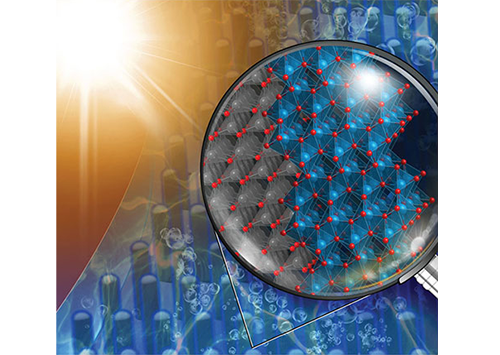
Nano Energy Powered by Self-sustained Nuclear Fusion: The material was created using the Atomic Layer Deposition and tested using the Photoelectrochemistry Test Station.
Mingzhao Liu, CFN Staff, Brookhaven National Lab

On your mark! Set! Go! The image is taking during a training for the XPS tool where one could see through the chamber the sample at the tip of a metal rod ready to be transferred to the UHV chamber.
Mohamed Boukhicha, CFN User, Brookhaven National Lab
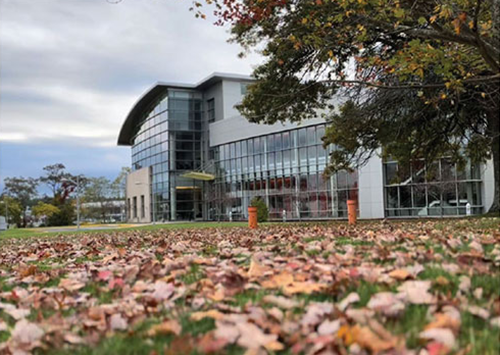
Autumn leaves fall, yet the CFN keeps rising
Manuel A. Lozano-Arroyo, CFN User, University of Puerto Rico
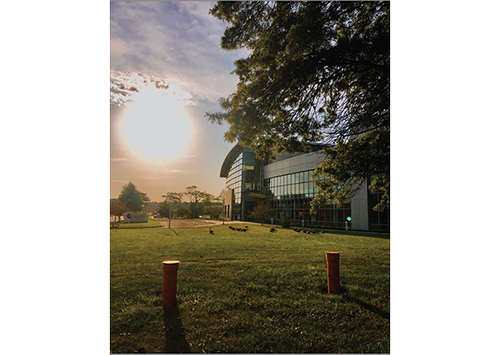
Home for the Day
Mohamed Boukhicha, CFN User, Brookhaven National Lab

A network of interpenetrating Carbon Nanotubes formed from a random array of multi-wall CNTs using high fl ux rate xenon ion bombardment with an energy of 2.87 keV and a total fl uence of 2.23X10^18 ions per square cm. CFN instrument used: Hitachi 4800 Field Emission SEM
Gregory Konesky, CFN User, National NanoTech, Inc.
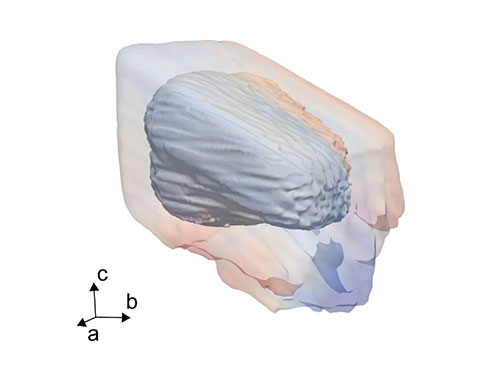
Magnetic domain found at the core of a micron-sized block of strontium iridate: This picture, made by Longlong Wu in the CMPMS department, is of a strontium iridate crystal prepared by FIB in the CFN. It is 1.3 microns on a side. It was subsequently imaged by X-ray Bragg coherent diffraction imaging. It shows a magnetic domain inside the crystal.
Ian Robinson, CFN User, Brookhaven National Lab
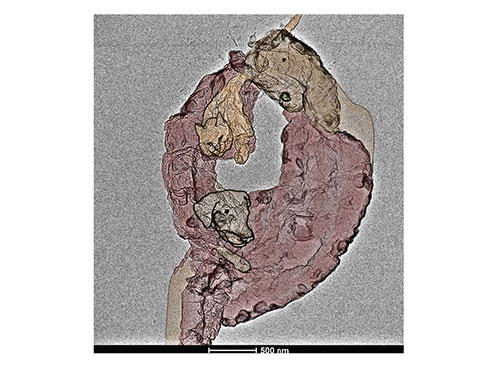
This image was done by digital drawing and coloring over a base TEM image of turbostratic graphene taken with CFN’s FEI Talos F200X by Kim Kisslinger as part of the project in our user proposal. The edited image depicts a person having their recharge time enveloped in a red heavy blanket along their pets: a cat and a dog. It refl ects the importance of taking time to recover our energy to keep forging our path.
CFN instrument used: FEI Talos F200X
Nataniel Medina Berríos, CFN User, University of Puerto Rico
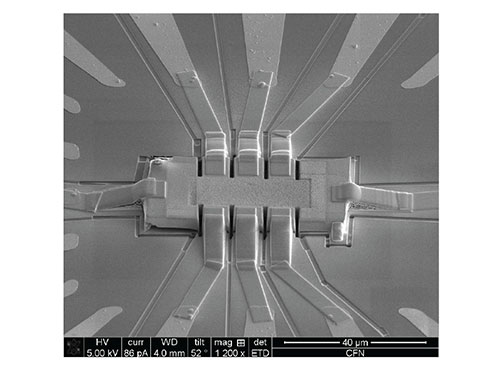
Microdevice fabrication at the CFN: A thin slab of ZrTe5 is carved from a bulk single crystal and shaped in a Hall bar geometry for transport studies of quantum materials with the use of the Helios FIB at the CFN cleanroom.
Pedro Mercado Lozano, CFN User, Stony Brook University




